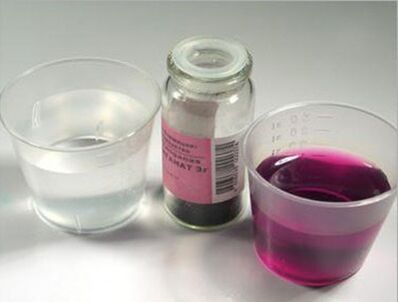Fungal nail infections are common these days. Fungal reproduction that is much more advanced in the thickness of the nail plate and in the soft tissue around the nail is fraught with complete loss of the nail without the possibility of partial recovery. That is why if you suddenly find a change in its structure or color that does not match the normal type of nail, be sure to contact a specialist for treatment. They will help determine the presence of a fungal infection and, if necessary, distinguish it from nail bruises, from manifestations of systemic diseases of the body.
Causes of toenail fungus

Compliance with normal hygiene rules and vigilance against infection is the basis for the prevention of fungal infections. Failure to adhere to these important aspects leads to disease. Often, the fungus gets on the skin and nail plate itself when you wear other people's shoes, take bathing procedures in public places such as baths, swimming pools, saunas, rarely or not washing your feet at all, do not fight too big nails. and cracks in the rough skin of the soles of the feet.
If the condition and disinfection of the pedicure tool is bad, it may also be infected with fungi, although this is full of more dangerous infections and infections, such as hepatitis B and C.
All these reasons lead to the fact that it is easiest for fungal microorganisms to fill previously healthy tissues, for this the best conditions are created, which you only worsen.
What does nail fungus look like?
Signs of toenail fungus do not appear at the same time. Before obvious changes in the nail plate of the affected toe in the area of the periungual soft tissue structure, skin cracks of various sizes and depths can be observed in the interdigital zone. Join the feeling of itching, tingling in the affected area. The skin may begin to peel, red in varying degrees of severity of these symptoms. The main signs of fungal infection are changes in the nail plate. It can be thick or thin, and changes in the usual color of the nails are also characteristic: white, light yellow, dark yellow, brown, light green, color combinations. The edge of the nail is no longer flat, in the case of extension the nail gradually loses its structure, breaks, collapses. Eventually, delamination of the entire plate may occur.
Looking closely at your friends, especially those who are mature and old, you are likely to easily identify the symptoms of nail fungus.
How can you tell a bruised nail from a fungus?
First of all, bruises on the nails are directly related to the fact of having a recent injury to the toes. External manifestations of bruising do not occur immediately, but after 2-3 hours. Before this, the finger swells, may become red. Further, the blood that accumulates under the nail plate (and this is due to its outflow from the damaged channels of the nail bed) becomes visible to the naked eye. The cluster initially acquires a pink-red color, over time it turns into dark red, dark purple and even black. In parallel, the hematoma decreases in size, and at the end of the healing process it may look like a point. The soft tissues of the fingers maintain swelling, and bruises can also form on them. The severity of the symptoms depends on the force that caused the injury to the finger and nail plate.
Therefore, the symptomatology and actions of the patient before its appearance, the characteristics of the picture of bruised nail, are fundamentally different from the clinic of fungal nail infection. The difference is also clear in the mechanism of the development of this disease: they are infected with fungi, further damage to the nail is precisely associated with the activity of microorganisms, bruises are the result of injuries, and hematomas are formed because to damage the finger canal, no microorganisms are involved in the pathogenesis. Also, nail fungus is treated by dermatovenereologists or dermatologists, while bruises are closer to the activities of traumatologists and surgeons.
Method for checking fungal infection with potassium permanganate

A quick and easy recipe for diagnosing fungus can be used at home. The main ingredient for determination is potassium permanganate (potassium permanganate), which must be diluted in pure water to achieve its pale purple color. Next, you must place your feet in colored water and soak for a few minutes. If your nails really have fungus, then potassium permanganate will not stain the affected area (it will be white). The healthy part of the nail plate will turn brown. So you can diagnose the disease easily.
After you finish this experiment, don't forget to treat your nails with hydrogen peroxide for disinfection. And be sure to contact a specialist if you find a positive diagnostic result. Now you know how to recognize nail fungus at home without much effort.
The diagnosis of nail fungus in the hospital certainly includes other laboratory methods that are more accurate to solve the problem.
We treat nail fungus with medications

As you know, many people prefer to try folk treatment of any disease rather than modern medicine treatment by doctors. It is possible that nail fungus can be treated with folk methods in some cases, but there is no evidence base for this. That is why the main recommendation if you have a fungal infection on the nails is to follow the medical prescription, follow the treatment with pharmacological preparations.
Depending on how far the disease has progressed, the form of medicine is selected. Basically, they are divided into local (local) means and general actions. These drugs contain antifungal agents - a special group of pharmacological substances.
In the first stage of fungal infection, the use of local medicine (ointment, cream, gel) is better. If the fungus has been able to enter the general circulation, which is the worst result, or the nail plate is significantly affected, the treatment is supplemented with general preparations (tablets or infusions of solutions).
The list of antifungal drugs intended for the treatment of fungal infections of the toenails includes: levorin, nystatin, fluconazole, ketoconazole, miconazole, amphotericin B, griseofulvin, itraconazole, terbinafine. This is the name of the active ingredient that forms the basis of the treatment. Such funds can be part of various drugs. That is, the latter drugs are just trade names for the ingredients listed first. In order not to make a mistake with the drug, its form of use and dosage, be sure to consult a specialist and follow their recommendations for treatment.
The most common treatment methods include:
- soda bath
- iodine treatment
- therapy with vinegar or vinegar essence
- fungus treatment with laundry soap
Folk methods are effective only in the initial stages, together with medicines.
Prevention of nail fungus infection

To protect yourself from fungal microorganisms, you don't need to follow any special rules, everything is easy if you introduce them into your daily routine. For starters, refuse to wear other people's shoes, even in the most harmless case in your opinion. Also make sure you use slippers and individual slates in the shower, sauna, swimming pool.
Always take care of your feet, disinfect well with soap, dry your skin. Try to avoid shoes that make your feet sweat. Pay attention to the appearance of cracks in the skin of the feet, especially near the nail plate and in the interdigital space. Change socks daily and when dirty. And if sweating on your feet is your not so pleasant routine, then we advise you to be interested in special baths, they can really help you.
Fungal infections are a common disease among the country's population today. Many are unaware of its presence, referring, perhaps, to the symptoms of bruised nails or superficial daily pollution. But, as you have seen, the fungus causes quite characteristic clinical manifestations. A person just needs to take a closer look at their feet and seek medical help for timely treatment, but it is better to deal with infection prevention.
















